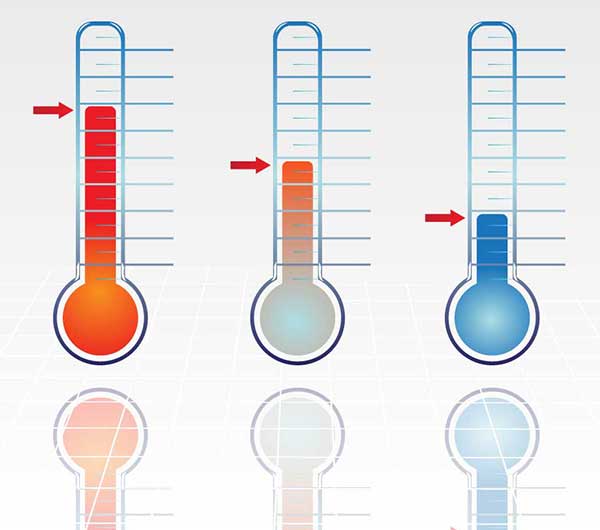How a Commercial Cooling System Works | Michigan 2020 HVAC

Most of us don’t think too hard about how our commercial air conditioning systems work. It’s a particularly ingenious bit of technology that’s stood the test of time and has become more and more important. Refrigeration, creature comforts—the applications are widespread and will only become even more prevalent as time goes on. As such, it’s good to have even just a basic understanding of the physics behind it so that we understand what needs to be fixed when something goes wrong or when we need to upgrade our systems.
The Background
Air conditioners use some basic physics principles to cool the air—the refrigeration cycle is the primary mechanism by which today’s air conditioners provide a comfortable temperature. It’s based on two facts: The first is that a liquid’s boiling point depends on how much pressure it is under. Many pre-packaged foods have separate, high-altitude cooking instructions for this reason—because at higher altitudes the atmospheric pressure decreases, which means a lower boiling point for water.
The second principle is that when a substance vaporizes (goes from a liquid state to a gaseous state), it absorbs heat from its surroundings to energize the change. That’s why you use heat to boil water. Now let’s apply these principles to an HVAC system.
The Refrigeration Cycle
The main concept behind the way an air conditioner works is the transfer of heat. The air conditioner gathers heat from one area of the system and moves it to another. Removing the heat creates cold, and that cold is pumped through your home to keep you comfortable. To make this process happen, the system has several important components that all must work together to cool the air inside your home.
- The Compressor
The compressor in an air conditioning system is sometimes called the “heart” of the system. The air conditioner pumps refrigerant through the compressor to ensure it can fully cool the building. Refrigerant enters the compressor as a gas. Once inside, the gas is compressed, increasing its pressure and temperature. The gas leaving the compressor is extremely hot and under a high pressure.
- The Condenser
The compressed, hot gas moves into the condenser coil. A fan blows air over the coil to cool the refrigerant, allowing it to condense into a liquid and change its state. This all happens in the system’s outdoor unit. Once the refrigerant is in its liquid state, it is ready to go back inside the building.
- The Metering Device
After leaving the condenser, the liquid refrigerant passes through a metering device that controls its flow to the evaporator. The metering device represents the point at which the refrigerant drops from high to low pressure.
- The Evaporator
The evaporator coil uses hot air from the building to heat the refrigerant until it boils and changes back into a vapor. The refrigerant absorbs the heat, leaving the air around the evaporator coil cold. Once the vapor is sufficiently heated, it returns to the compressor to start the cycle over.
The refrigeration cycle removes heat from one area and relocates it to another. To cool your indoor spaces, your air conditioner’s or heat pump’s refrigerant is pumped through this closed refrigeration system. The same refrigerant is continuously used over and over as it passes through the cycle. With induced pressure changes from the condenser coil, compressor, evaporator coil and the expansion valve, the state of the refrigerant is forced to shift between a liquid and gas. No matter the size of the building, these basic concepts remain the same.
If you need more advanced knowledge about your cooling system such as repair or maintenance concerns, leave it to the experts. Level One HVAC is ready to respond to all your HVAC needs. Give us a call at (248) 486-6500 if you’d like to know more. If you don’t have time to call, you can fill in our online contact form and someone from our staff will be in touch with you shortly.
Visit our social media accounts for more information: Facebook Fan Page / Twitter Feed / Google+ Account / LinkedIn Company Page
- High Performance Service Agreements
- 100% Satisfaction Guarantee
- 24/7, 365 Service
- 25+ Years in Business

